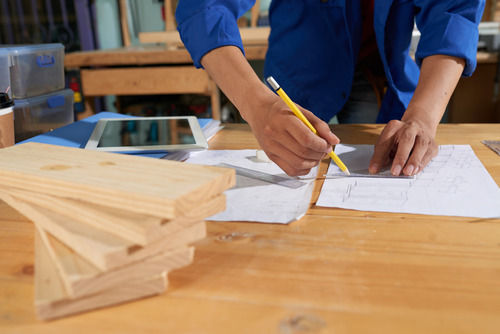Why Top Furniture Brands Rely on 3D Furniture CAD Design Services in 2025
- luices159
- Jul 25
- 3 min read
The furniture industry is undergoing a quiet revolution—and it’s being led by pixels, not planks. In 2025, top furniture brands are moving away from outdated prototyping methods and embracing the precision, flexibility, and efficiency of 3D Furniture CAD Design services.
From luxury residential pieces to mass-market commercial collections, furniture manufacturers are using 3D modeling not only to streamline production but to design smarter, faster, and more competitively. If you’re in the business of furniture design or manufacturing, this shift is impossible to ignore.

Let’s explore why 3D furniture modeling has become essential in today’s furniture design process—and why major brands are investing heavily in it.
The Growing Importance of 3D in Furniture Design
Before a chair is ever built or a cabinet is cut, it must first exist as an idea. Traditionally, that idea would be sketched, reviewed, redrawn, and eventually turned into a physical prototype. This process could take weeks or even months—slowing down product launches and increasing costs.
But in 2025, 3D Furniture Modeling Services allow designers to create photorealistic, dimensionally accurate virtual models in a fraction of the time. These digital assets are rich in detail, easy to modify, and ready for everything from internal reviews to customer previews.
Here’s how they’re reshaping the industry:
1. Faster Design Cycles, Fewer Delays
Speed is king in a competitive marketplace. With 3D Furniture CAD Design services, brands can go from concept to production-ready files in a matter of days, not weeks.
Designers can explore variations—changing colors, textures, materials, or dimensions—with just a few clicks. This drastically cuts down on design cycles and accelerates time to market, a key advantage in a trend-driven industry.
2. Enhanced Collaboration and Communication
3D models serve as a universal language between designers, engineers, marketers, and manufacturers. Everyone sees the same accurate digital prototype, reducing confusion and costly misinterpretations.
Manufacturing partners can extract dimensions and tolerances directly from the 3D file, ensuring components fit perfectly the first time. This alignment is one reason why big brands have moved away from 2D-only workflows.
3. Customization Made Easy
In 2025, personalization sells. Whether it’s a customer choosing fabric colors or a hotel client requesting modified dimensions, 3D furniture modeling allows for endless customization.
Brands can quickly showcase what variations will look like—without having to produce multiple physical samples. This is especially useful for luxury or made-to-order furniture collections where flexibility is key.
4. Photorealistic Renders for Marketing
Another major advantage? 3D Furniture Modeling Services produce images that are so realistic, they’re often used in catalogs, websites, and social media long before a physical product exists.
This virtual staging cuts photography costs, speeds up marketing timelines, and allows for early feedback from customers and stakeholders. No need to wait for the final prototype—your marketing can launch as soon as the design is approved.
5. Eco-Friendly and Cost-Efficient
Sustainability is no longer optional in the furniture business. 3D Furniture CAD Design services help reduce waste by minimizing the number of physical prototypes and errors in manufacturing.
Fewer revisions mean less material waste, less shipping, and lower carbon emissions. Brands focused on green practices see this as a major win—not just for their budgets but for their reputations.
Real-World Success: Shalin Designs
One brand helping top-tier furniture manufacturers transition into this digital-first world is Shalin Designs. Known for its precision and design sensibility, the company offers end-to-end 3D Furniture Modeling Services—from conceptual 3D sketches to manufacturing-ready CAD files.
Their team collaborates directly with in-house designers and engineers, ensuring that every curve, joint, and finish detail is represented accurately. Brands love their ability to visualize final products before a single board is cut—saving time, money, and a lot of headaches.
Future-Proofing the Furniture Industry
With AI-assisted design, virtual reality walkthroughs, and digital twin technologies on the rise, 3D furniture modeling is no longer a bonus—it’s a baseline.
Companies that fail to adopt these digital workflows risk falling behind competitors who are already leveraging them to cut costs, improve quality, and deliver better customer experiences.
As consumer expectations for speed, customization, and visual accuracy grow, 3D modeling provides the infrastructure needed to meet them. From initial concept all the way to assembly line production, the technology creates a seamless, scalable, and sustainable design process.
Conclusion
The furniture industry of 2025 is sleek, fast, and digitally empowered. From luxury lounges to modular office systems, everything begins with a smart, accurate, and flexible digital model.
That’s why more and more brands are turning to 3D Furniture CAD Design services as their go-to solution for product development. With the help of expert teams like Shalin Designs, furniture companies are designing better, producing smarter, and staying far ahead of the curve.
If you’re still relying on hand-drawn sketches and guesswork, it’s time to upgrade. The future of furniture starts in 3D.



Comentarios